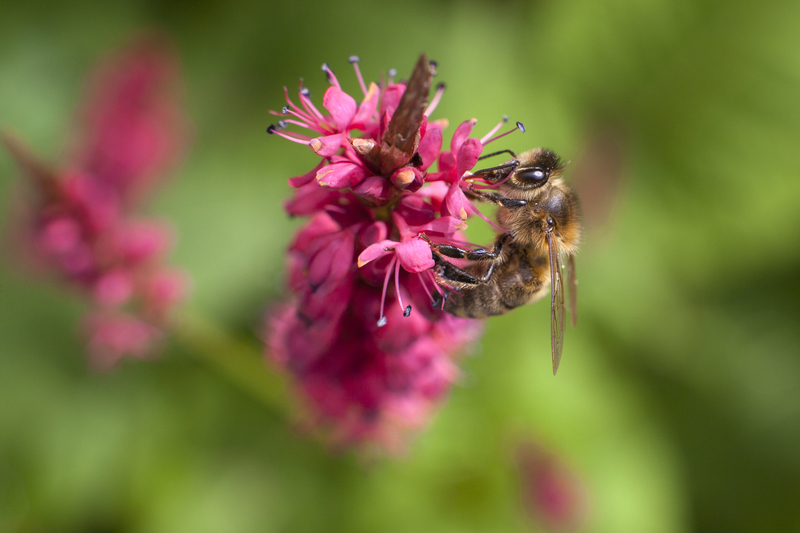Dynamic Hedge Trimming: Unveiling New Shapes and Forms
Posted on 22/08/2025
Dynamic Hedge Trimming: Unveiling New Shapes and Forms
Welcome to a deep dive into the fascinating world of dynamic hedge trimming--a creative, continually evolving art that transcends traditional landscape design. Whether you're a professional landscaper, an avid gardener, or a homeowner with horticultural aspirations, mastering innovative hedge shaping techniques has never been more accessible or exciting. Get ready to reimagine your garden boundaries and living green structures in ways you've never seen before!
Understanding Dynamic Hedge Trimming
Dynamic hedge trimming is no longer just a means to maintain neat, uniform garden edges. Instead, it has blossomed into an expressive horticultural discipline, injecting personality, movement, and modern flair into outdoor spaces. But what exactly is dynamic hedge trimming, and how does it differ from classic hedge cutting techniques?
Defining Dynamic Hedge Trimming
At its core, dynamic hedge trimming refers to the ongoing sculpting of living hedges into not only geometric forms but also organic, fluid, and sometimes abstract shapes. Unlike traditional trimming, this innovative approach embraces asymmetry, curvature, and the integration of various plant textures and heights.
- Traditional Hedge Trimming: Focuses on simple, straight lines or basic geometric patterns for privacy, boundaries, and order.
- Dynamic Hedge Trimming: Explores curves, waves, spherical forms, spirals, animals, and even hedge "murals"--showcasing living art that constantly evolves.

The Rise of Creative Hedge Forms
Dynamic hedge trimming is gaining momentum worldwide, thanks to the growing trend for garden personalization and expressive landscape design. Homeowners and professionals alike are pushing the boundaries of what's possible with hedges--unveiling new shapes and forms that act as impactful visual focal points.
Popular Dynamic Hedge Shapes
- Waves and Serpentine Patterns: Simulate the gentle undulation of the ocean or the elegant curve of a snake, adding movement and visual dynamism to otherwise static boundaries.
- Spirals and Twists: Bring a touch of whimsy and architectural intrigue, often used to frame entrances, pathways, or key garden features.
- Topiary Sculptures: Transform shrubs into animals, mythical creatures, or abstract patterns, making your garden a living art gallery.
- Layered Hedge Walls: Use different heights and species to achieve a textured, three-dimensional "green wall" effect.
- Geometric Illusions: Create cubes, pyramids, spheres, and even interlocking shapes to blur the line between organic growth and mathematical perfection.
Why Choose Dynamic Hedge Shaping?
- Boost Curb Appeal: Eye-catching hedge forms turn ordinary properties into statement landscapes.
- Enhance Biodiversity: Varied shapes and sizes offer microhabitats for wildlife.
- Reflect Personality: Tailor your garden to express creativity and individuality.
- Define Spaces: Unique hedge forms help to delineate garden "rooms" or structures.
- Add Value: Striking landscape features may increase property value and desirability.
Essential Techniques for Dynamic Hedge Trimming
Mastering dynamic hedge forms requires a blend of technique, vision, and proper tools. Below, discover the art and science behind crafting unique hedge shapes that stand out for their beauty and creativity.
1. Choose the Right Plant Species
- Boxwood (Buxus): Ideal for dense, easily-shaped forms.
- Yew (Taxus): Long-lived and tolerant of creative trimming.
- Ligustrum (Privet): Fast-growing and forgiving for beginners.
- Holly, Laurel, Hornbeam: Offer broader leaves and can be used for chunkier, more substantial forms.
Tip: Always select species suited for your local climate and light conditions for healthy, vibrant growth.
2. Plan Before You Prune
Before snipping, visualize the new shape you want to achieve. Use stakes, string, or even cardboard templates for complex designs. Mark out curves and outlines for guidance, ensuring symmetry and proportion--even if your design is intentionally asymmetric!
3. Leverage the Right Tools
- Shears: For gentle shaping and clean lines.
- Electric or Battery Hedge Trimmers: Speed up larger projects.
- Topiary Frames: Useful for beginners aiming for intricate forms.
Always use sharp, sanitized blades to reduce plant stress and prevent disease spread.
4. Trim at the Right Time
- Late Spring & Early Summer: Best for most evergreen hedges following a spring growth flush.
- Early Autumn: A light tidy-up before dormancy but never heavy pruning before frost.
Note: Timing ensures lush regrowth and minimizes the risk of plant shock.
Innovative Dynamic Hedge Trimming Styles
Now the fun begins! Explore popular and cutting-edge styles for dynamic hedge trimming that can inspire your next garden project.
Wave and Cloud Pruning
Inspired by Japanese garden artistry, wave and cloud pruning invites dreamlike movement into your landscape. By carving undulating lines or puffy, cloud-like clusters, you introduce softness and fluidity--a refreshing counterpoint to rigid lines.
- Best plants: Boxwood, Japanese Holly, Yew
- Pro tip: Step back frequently while sculpting to check proportions and flow.
Animal, Object, and Fantasy Topiary
Transform your hedges into living statues! Topiary art allows you to shape plants into animals, objects, or even mythical creatures.
- Start with simple spheres or spirals, then progress to rabbits, peacocks, dragons, and more.
- Frame-based topiaries offer support and guidance for complicated forms.
Sculptural and Geometric Forms
Dynamic hedge trimming isn't limited to organic forms--modern landscape designers often celebrate geometry, too.
- Create cubes, pyramids, dominoes, or spiral columns for a contemporary aesthetic.
- Contrasting forms and sizes within one border can produce a playful or avant-garde effect.
Benefits of Dynamic Hedge Forms vs. Static Trimming
Wondering why make the shift towards dynamic hedge maintenance and adventurous new shapes? Here's a comprehensive look at why so many are making the change:
- Greater Visual Impact: Unique forms captivate attention and generate conversation--from quiet private gardens to public parks.
- Functional Flexibility: Curved lines and sculpted shapes can screen unsightly areas more artfully and define traffic flow.
- Ecological Benefits: Layered and varied structures create diverse habitats for birds, pollinators, and beneficial insects.
- Seasonal Interest: Carefully planned dynamic hedges change through the seasons, showcasing blooms, berries, and subtle shifts in color and form.
Challenges of Dynamic Hedge Trimming
Of course, the art of dynamic hedge shaping isn't without its challenges:
- Time Investment: Complex forms require more frequent, careful maintenance compared to straight-line trimming.
- Skill Level: Artistic vision and a steady hand are essential--especially for intricate or large-scale projects.
- Pest & Disease Management: Dense, complex forms may harbor pests unless monitored and cared for closely.
- Plant Health: Incorrect or excessive cutting can stress plants, so knowledge and gentle technique are vital.
Step-by-Step Guide: How to Start Dynamic Hedge Trimming
- Research & Plan: Sketch your ideas and gather visual inspiration. Consider your garden's style, available space, and plant species.
- Prepare Tools & Plants: Clean and sharpen your pruning equipment. Make sure your hedges are healthy and free from disease.
- Structure Your Design: For geometric shapes, use stakes, guides, or frames. For freestyle forms, rely on regular observation and gentle adjustments.
- Begin Trimming: Start with gradual, conservative cuts--remember, you can always remove more, but you can't put it back!
- Step Back Often: Regularly walk around your work to view proportions from all angles.
- Maintain & Refine: Touch up new growth regularly to keep outlines crisp and forms clean.
Aim for progress--not perfection. Every dynamic hedge takes time to mature and reveal its full artistic potential.
Dynamic Hedge Trimming for Small and Urban Spaces
You don't need a grand estate to enjoy the perks of dynamic hedge forms! Urban and suburban gardens can benefit just as much:
- Mini Topiary: Choose dwarf or slow-growing species and sculpt them in pots or raised beds.
- Vertical Hedge Walls: Espalier techniques and creative pruning along fences provide movement and privacy in tight spaces.
- Miniature Waves and Spirals: Tiny cloud-shaped hedges or spiral columns beside entryways offer big impact in little yards.
Inspirational Ideas for Small Spaces
- Frame windows or doors with softly undulating green "waves."
- Mix mini hedges with ornamental grasses for textural contrast.
- Combine dynamic hedges with sculptural containers, statues, or garden lighting for added drama.

Dynamic Hedge Trimming FAQs
Q: How often should I trim my dynamic hedge shapes?
A: Most shapes will need touch-ups two or three times a season to stay crisp and healthy. Rapid growers may need more frequent snips, while slow-growers can be maintained with less effort.
Q: Are there resources for beginners?
A: Absolutely! From online video tutorials to topiary books and local gardening clubs, plenty of resources exist for those looking to master dynamic hedge trimming.
Q: What species are best for elaborate designs?
A: Evergreen species like boxwood, yew, and privet are classics, but don't overlook alternatives such as holly, myrtle, or even rosemary for smaller and fragrant forms.
Q: Can I fix mistakes?
A: Most hedges are resilient! Prune with care and patience; small errors will usually fill in over time. For major mishaps, rethink your design or wait for regrowth before reshaping.
Conclusion: Embrace the Art of Dynamic Hedge Trimming
Dynamic hedge trimming is more than just a landscaping trend--it's an evolving horticultural practice that empowers anyone to become a garden artist. By unveiling new shapes and forms with bold, creative cuts, you're not only elevating your property's aesthetic value but also playing a vital role in urban biodiversity and outdoor well-being.
Ready to transform your garden? Dynamic hedge trimming offers endless possibilities--from subtle, organic waves to jaw-dropping topiary masterpieces. Start small, nurture your vision, and watch your garden come alive with artful energy and vitality.
Discover the joy of dynamic hedge shaping and make your outdoor space one-of-a-kind--because your hedges can be as unique and vibrant as you are.
- Explore new shapes this season
- Experiment with forms: waves, clouds, animals, and more
- Share your creations with fellow enthusiasts and inspire your community!
For more garden tips and inspiration on dynamic hedge trimming and landscape innovation, stay tuned to our blog!



